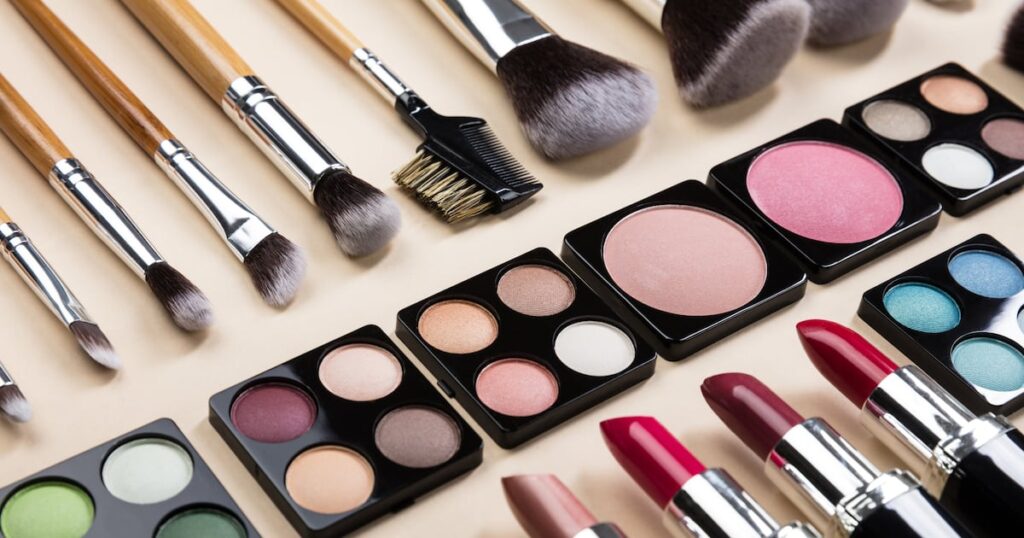[ad_1]

The beauty industry is poised for a dynamic transformation in the year ahead, fueled by shifting consumer preferences, global influences, and technological advancements. According to a recent McKinsey report, the global beauty market is expected to grow to $758 billion by 2025, driven by consumer demand for sustainability, ethical practices, and multifunctional products.
“In 2025, we’ll see a convergence of beauty and functionality, driven by consumers who demand more from their products—be it sustainability, health benefits, or ethical sourcing,” says Karan Gupta, co-founder of Odore, emphasizing that brands failing to adapt quickly to these trends risk falling behind in a highly competitive landscape.
We spoke to Gupta to explore his insights in the current beauty space: from the rise of multifunctional products to the growing influence of nano-influencers, he explores a detailed roadmap for navigating the cosmetics and personal care product industries in 2025.
The rise of “beautility” and global influence
One of the key trends Gupta identified is the rise of “beautility,” where beauty products offer added functionalities beyond their primary purpose. “Consumers want beauty products that have additional functionalities,” Gupta explained.
“This is something we’ve seen evident through the emergence of products that are makeup but skin care-enabled,” he added, “like liquid foundations with sun protection. This will only accelerate as consumers become more conscientious all around.”
Regional influences are also gaining prominence, particularly from the Far East and West Africa. “These regions are famed for their use of natural, organic ingredients with additional health benefits,” Gupta explained.
However, he cautioned brands to tread carefully when adopting cultural elements: “Brands need to ensure they truly understand their target market and avoid cultural appropriation, staying aligned with their heritage and customer demands.”
Clean beauty: From trend to standard
Clean beauty is fast becoming an industry norm, reflecting evolving consumer expectations for transparency and ethical practices. “Education in the market is quickly improving due to the way consumers conduct research through social media,” Gupta observed. As a result, “brands must be more transparent about their ingredients and processes,” he continued.
For brands to meet these demands, authenticity is essential. “Whatever products a brand pushes, they’ll need to think very carefully about how their marketing campaigns resonate against the backdrop of consumer expectations for transparency and authenticity,” he advised.
Booming male beauty market
The male beauty market is poised for significant growth in 2025, presenting opportunities and challenges for brands. “Through our work with brands like Mattr Cosmetics and its founder Matthew Rodrigues, we’ve seen an upward trend and believe the male beauty market is set to boom,” Gupta stated.
Speed and authenticity will be critical for brands entering this space. “From a marketing perspective, that will mean identifying the right type of influencers that align with their brand values, building an engaged community, leveraging authentic UGC, and fostering organic endorsements,” he shared.
He also highlighted a key success story: “We’ve seen this done incredibly well within our client base, with a men’s makeup brand that is number one on Amazon, which is also the fastest-growing category on the site.”
Inclusivity and the power of nano-influencers
Inclusivity remains a driving force in beauty, and consumers are demanding authentic representation. “Consumers want to see products sampled on people that look like them and that they can identify with,” Gupta said.
The rise of nano-influencers is helping brands connect with audiences more authentically. “The challenge with this has always been the ability to work with them at scale,” he noted.
However, tools now make it possible to manage large-scale nano-influencer campaigns efficiently. “For a lot of enterprise brands, it only makes sense to work with nanos if they are able to do large volume campaigns simultaneously, which traditionally has been incredibly resource-intensive to manage,” he added.
Social media and instant shopability
Social media trends, particularly the dominance of short-form video, are shaping brand strategies for 2025. “I expect to see a continued dominance of short-form videos,” Gupta predicted. “Brands have started to do this, but most have not implemented a consistent strategy.”
Gupta also foresees a rise in instant shopability, especially among Gen Z consumers. “This is something we’ve already seen gathering momentum with the popularity of TikTok Shop, for example,” he noted.
Long-term partnerships with influencers will play a critical role. “Brands will continue to emphasize their commitment to social and environmental causes, leveraging long-term content creator relationships, rather than one-off campaigns,” Gupta explained.
Technology and AI: The competitive edge
AI and advanced technology are set to revolutionize beauty marketing. Gupta highlighted the potential for personalization at scale: “We believe the biggest impact will be on content creation and giving brands the ability to personalize content at scale.”
Therefore, he continued, “brands should start exploring ways to utilize AI tools to enhance content relevance and efficiency now to be ahead of the curve.”
As an example, he illustrated how Odore’s platform is designed to help brands meet these challenges. “Our technology makes building and managing creator and ambassador programs at scale a seamless reality,” Gupta said. “Until recently, it’s been virtually impossible to manage creators at a scale of 10,000-20,000 manually, but our platform can.”
Leading the beauty landscape in 2025
To stay ahead in the competitive landscape, Gupta emphasizes agility and community-building. “With trends changing daily, brands will need to be more flexible in their marketing strategies so that they can react to current trends,” he stated. “Building successful communities takes time, but those that invest early will reap the most reward.”
Gupta concluded with a key insight: “The beauty industry is a marathon, not a sprint. For brands to lead in 2025, they need to become much more reactive to current trends and use technology to maintain authenticity and engagement.”
[ad_2]
Source link

